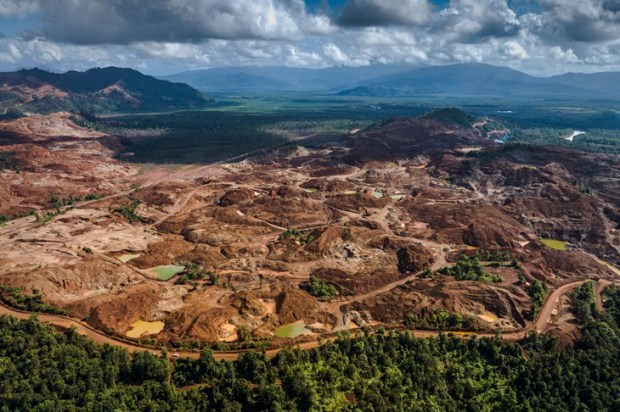Australia’s uranium mining industry is a paradox: home to the world’s largest reserves of recoverable uranium, and yet constrained by some of the strictest regulatory frameworks globally. As the world pivots towards cleaner energy sources and the nuclear power sector experiences a renaissance, Australia’s prohibitions on uranium mining appear increasingly anachronistic. Revisiting these policies could unleash significant economic benefits and bolster the country’s standing in the global energy market.
Australia’s uranium reserves are nothing short of colossal. With 1.69 million metric tons of uranium resources, the country surpasses its closest competitors – Kazakhstan, Canada, and Russia – by a considerable margin. Notable deposits, such as Olympic Dam, Kintyre, and Yeelirrie, underscore the country’s potential to dominate the global uranium market. However, production figures tell a different story: in 2022, Australia produced a mere 4,087 metric tons of uranium, far behind Kazakhstan’s 21,227 metric tons.
The demand for uranium is projected to surge as the world leans more heavily on nuclear power to meet its energy needs while reducing carbon emissions. According to the International Atomic Energy Agency (IAEA), the global nuclear power generation capacity could increase by as much as 140 per cent by 2050, depending on the scenario. Countries like China, Russia, and India are leading this nuclear expansion, with numerous reactors planned or under construction. This burgeoning demand positions uranium as a critical resource for the future energy landscape.
Australia’s restrictive regulatory environment is a primary bottleneck stifling the growth of its uranium industry. Various states have imposed outright bans on uranium mining or exploration. For instance, Queensland lifted a long-standing ban in 2012 only to reinstate it three years later. New South Wales allows exploration but prohibits mining, and Victoria bans both. Western Australia, despite permitting four projects, has banned new uranium mines since 2017. The federal government compounds these hurdles with the Environment Protection and Biodiversity Conservation Act 1999 and the Australian Nuclear Non-Proliferation (Safeguards) Act 1987, which impose rigorous environmental and security standards on uranium producers.
The economic argument for deregulating uranium mining is compelling. Estimates suggest that lifting these regulatory constraints could transform Australia’s uranium sector into a $4 billion industry within a decade. This projection is based on a modest annual growth rate, reflecting the substantial latent demand and the robust market prices for uranium, which have surged in recent years due to supply constraints and increasing consumption.
Unlike many major uranium producers, Australia enjoys a high degree of political stability, a critical factor for investors in the mining sector. Countries like Kazakhstan and Niger, although leading in production, face significant political and operational risks. In contrast, Australia’s stable governance and well-established mining infrastructure provide a secure environment for investment, making it an attractive destination for international capital and expertise.
Environmental concerns are often cited as justifications for stringent regulations. While uranium mining does pose environmental risks, modern mining techniques can mitigate these impacts. In-situ recovery (ISR), for example, is a less invasive method that minimises surface disturbance and reduces waste production. Moreover, stringent regulatory oversight can ensure that environmental standards are maintained, and that communities are protected from potential hazards.
For Australia to harness its uranium potential, a balanced regulatory approach is essential. This does not mean abandoning environmental safeguards but rather adopting a more pragmatic stance that facilitates development while ensuring sustainability. By revisiting and refining its regulatory framework, Australia can stimulate economic growth, create jobs, and position itself as a leading player in the global nuclear energy sector.
The debate over uranium mining in Australia is at a crossroads. The global energy transition and the revival of nuclear power present a unique opportunity. The question for policymakers is whether to maintain the status quo or to pivot towards a more dynamic and forward-looking approach. Embracing the latter could unlock significant economic potential and secure Australia’s role in the future of clean energy.
As the world increasingly turns to nuclear power to meet its energy needs, Australia must decide whether it will remain on the sidelines or step up to become a major player in the uranium market. The potential rewards are immense, but realising them will require bold and strategic policy changes.
Richard Wilson is the Managing Director of Transformation Partners, a management consultancy that helps Australian resources, energy and utilities companies implement complex strategy and transformation changes.

























